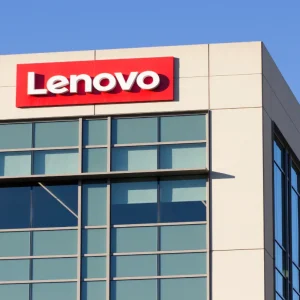Over the past two years gamification – the process of making tasks more game-like by combining elements of playing and working – has caught the attention of investors and start-ups and is being popularised as the next big thing by marketers.
Analysts say that this emerging business, and social, trend reflects the increasing adoption of video games in society and their influence in shaping our everyday interactions.
Examples of using gamification to achieve desired results include turning a customer survey into a game or encouraging employees to set goals by creating a competitive contest. Furthermore, as Michael Bayer, president of Avaya EMEA, a provider of business communications solutions, says: "Virtual environments that simulate the office or conference room offer a new way of building and nurturing team spirit by enabling a dialogue that is highly engaging, interactive, visual and social."
Gamification is expected to play a dominant role in the future of businesses, with Gartner predicting that by 2014 gamified services for customer retention will be as important as using social media sites.
In fact, according to Pew Research, the primary driver of gamification take-up is social networks. Game mechanics and elements, which are spread throughout these platforms, have helped make the likes of Facebook and Twitter popular.
The University of Washington demonstrated the power of gamification when it made news headlines in 2011 after creating the game Foldit. The game’s aim was for players to uncover the mystery of how an important protein could help cure HIV.
It was a success, with 46,000 players solving the puzzle in less than two weeks; it was a problem scientists had been trying to figure out for 15 years.
Industry analysts suggest that tapping into human motivations through game play is not entirely new, which is a sentiment that Wanda Meloni, founder and senior analyst at M2 Research, agrees with. "It is in our human nature to interact and be entertained with playful applications, particularly when there are engaging game design elements employed," she says.
Meanwhile, analysts at the company expect the total gamification market to reach $242bn by the end of 2012, climbing to $2.8bn by 2016. The enterprise element of that is quickly gaining ground, with M2 Research predicting it will make up 38% of the revenue by the end of 2012 and that it will overtake consumer gamification revenues in 2013.
Similarly, a Gartner report predicted that gamification will become a "highly significant trend over the next five years", with more than 70% of Global 2000 organisations expected to have at least one gamified application.
"The opportunity for gamification will grow on the grounds of user incentives for the consumers of applications and marketer incentives for the creators of gamified applications," says Meloni.
Business uses
Gamification can help businesses understand the motivations of customers or employees and can even help reveal ways to change customer behaviours.
"Any business that wants to encourage a change in their employee or customer behaviour would do well to consider the application of game mechanics into their business applications," says Peter Grant, CEO of CloudApps. "Gamification helps businesses achieve corporate goals quicker with the buy-in from the workforce."
It can also help direct sales, as well as increase brand awareness and loyalty. Gamification uses the power of the community to drive results, potentially leading to new product innovation initiatives and new ways of approaching CRM.
The concept can be applied internally and externally. Internal gamification, as shown in some examples earlier, aims to get employees involved and change their behaviour in order to, for example, raise productivity. It is also said to increase corporate social responsibility as well as employee contributions.
"Companies that have been using the work hard, play hard motto have noticed significant results," says Alexandre Wentzo, CEO of Casewise, which helps organisations understand their business operations.
He gave an example of the pharmaceutical company, Omnicare, which introduced gamification to its IT service desk operating model. "Omnicare found that by introducing an automated OmniQuest game, which included achievements, rewards in the form of badges, and real-time feedback within the ServiceNow platform, it realised 100% participation from team members," says Wentzo.
Introducing game techniques into its enterprise model motivated the company’s employees to perform specific behaviours. Staff were also more excited and motivated about tasks and projects.
"These are the kind of responses many companies or organisations have experienced since introducing gamification strategies," adds Wentzo, who also explains how skin care company, Galderma, used gamification to motivate its sales team: "In 2011, Galderma presented its sales force with a relatively traditional game; players could work individually or in groups to advance their avatar along a path riddled with quizzes and situational role plays."
The game’s purpose was to strengthen the staff’s knowledge about Galderma products and encourage them to build team spirit and become more involved. "In the end, the game not only strengthened Galderma’s sales force, it also measurably increased company sales," says Wentzo.
Organisations have also started using external gamification to better engage with their clients and future customers. Businesses using it for their website or service can help increase customer loyalty, reduce churn and attract new clients or customers.
Seeing a positive ROI
Researchers say that seeing a positive ROI may be a challenge in gamification but that those who adopt it early on will see the most benefits.
"Early adopters are most likely to reap the fruits of their efforts as more industries and players are crowding the field and changing the rules of gamification," says M2 Research’s Meloni.
Even though each business is different, mechanics and human behavioural traits are important factors that can determine if a company will see a positive ROI. Businesses should also make sure that their implementation has a specific goal in mind.
It can be useful to think of ROI for gamification in the same terms as ROI for traditional marketing activities.
"In order for businesses to see a positive ROI they need to determine what behavioural change will return the most benefit from their customers and employees," says CloudApps’ Grant. "If those behaviours are already orchestrated via the use of business software then that software is a strong candidate for gamification."
It’s important to apply gamification methods when there is a large enough audience to target, while a population that likes to solve puzzles and is competitive will be most attracted to gamification concepts.
Businesses should also keep the game and rewarding concept simple. Games where top performers get public recognition will encourage participation, too, and companies can also consider adopting software or applications that are flexible enough to easily implement game capabilities in the future if needed.
Long-term thinking
Organisations should realise implementing gamification is not a short-term strategy. It requires thorough audience research, application design and maintenance to ultimately see a positive ROI. Long-term strategies provide target audiences with incentives to dedicate their time and attention to a certain application while creating a sense of community.
"Reaching beyond the hype of gamification will require organisations to think beyond the obvious and realise that gamification is not just a pure marketing play, and not a game," adds Meloni. "It involves various additional talents that need to be in sync."
Successful gamification techniques require engagement strategies, game theory knowledge, dedicated budgets, and audience psychology research. Compatibility with social networks will also have a significant effect on the success of an application.
While gamification can offer opportunities, experts say that there are risk factors that should be taken into account, and that a trial and error component should be a part of every strategy, specifically in product marketing. Organisations will also have to make sure that they can implement game mechanics without alienating users.
Gamification strategies can also be more difficult to implement than social media strategies. While social media can be a job function, gamification is far more project-driven.
"While it’s easy for a company to hire a social media expert to take care gamification requires a lot more thought and more people," says Daanish Khan, head of marketing and strategy at Formicary Collaboration Group, a provider of real-time collaboration solutions. "Because each game has different objectives, it needs to be developed differently to other games, meaning that each one will require new material, new stories and new missions."
Khan predicts that in the future, gamification will follow a similar pattern as social media but at a slower pace. While the latter often has the same mass appeal for all participants, the former will significantly vary between organisations, industries and platforms.
Although analysts say that gamification is set to be an important trend to increase employee productivity, sales and clientele, it is clear that it is still in its very early stages. However, businesses that do not try to adopt game mechanics as its popularity increases will simply become less competitive in their market.






